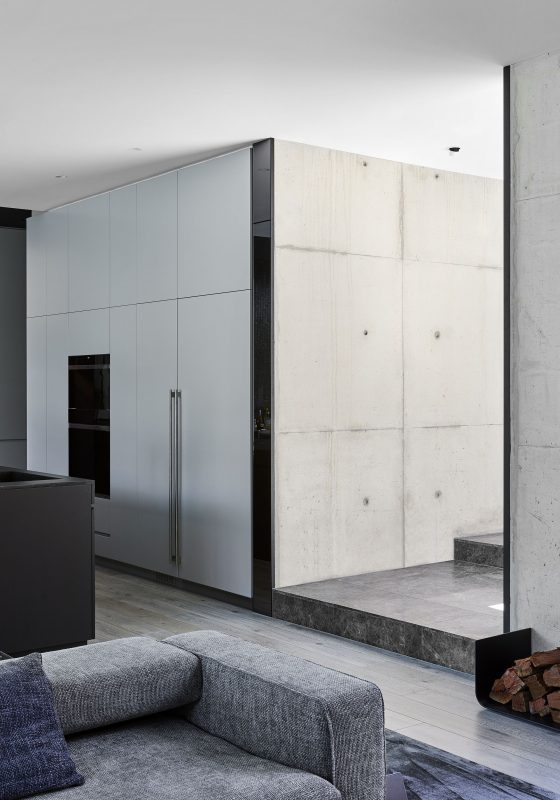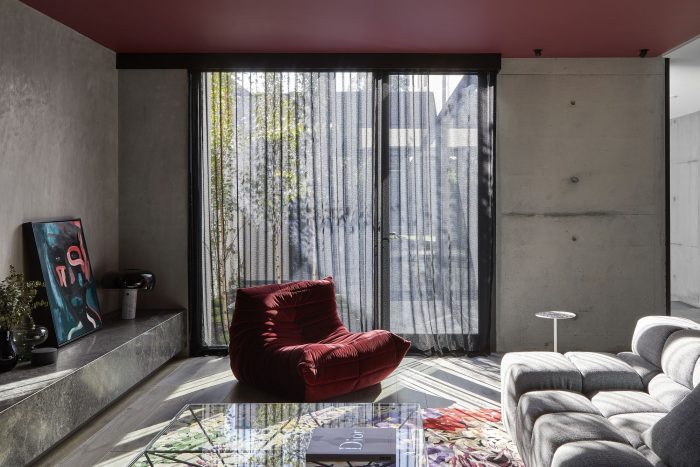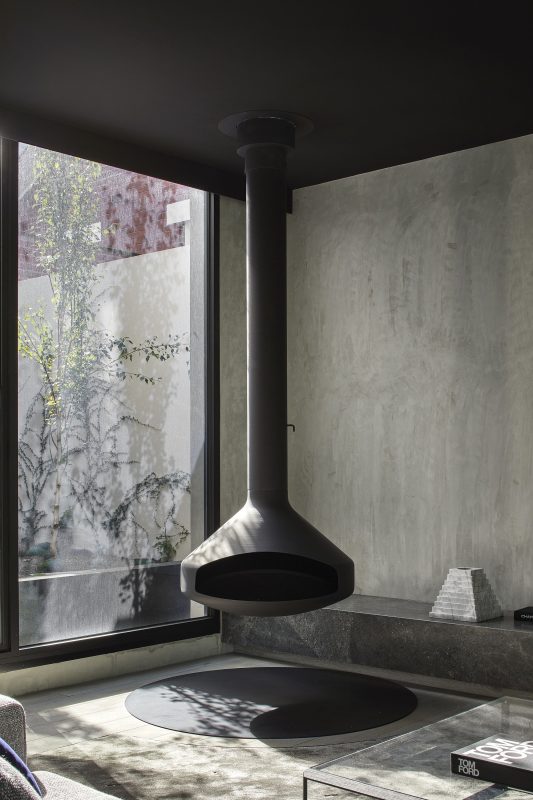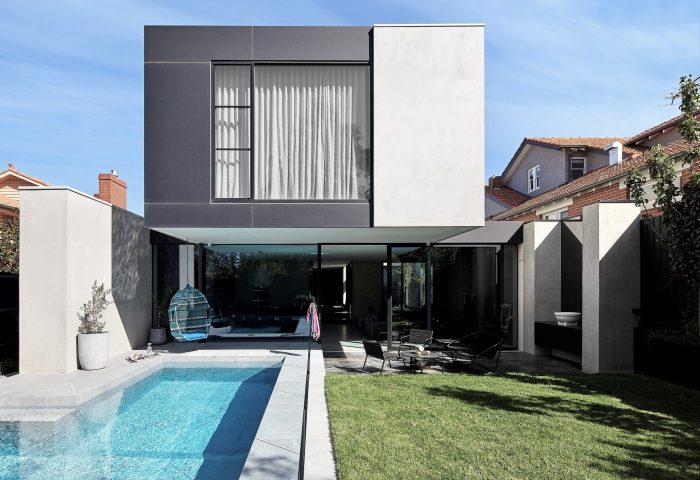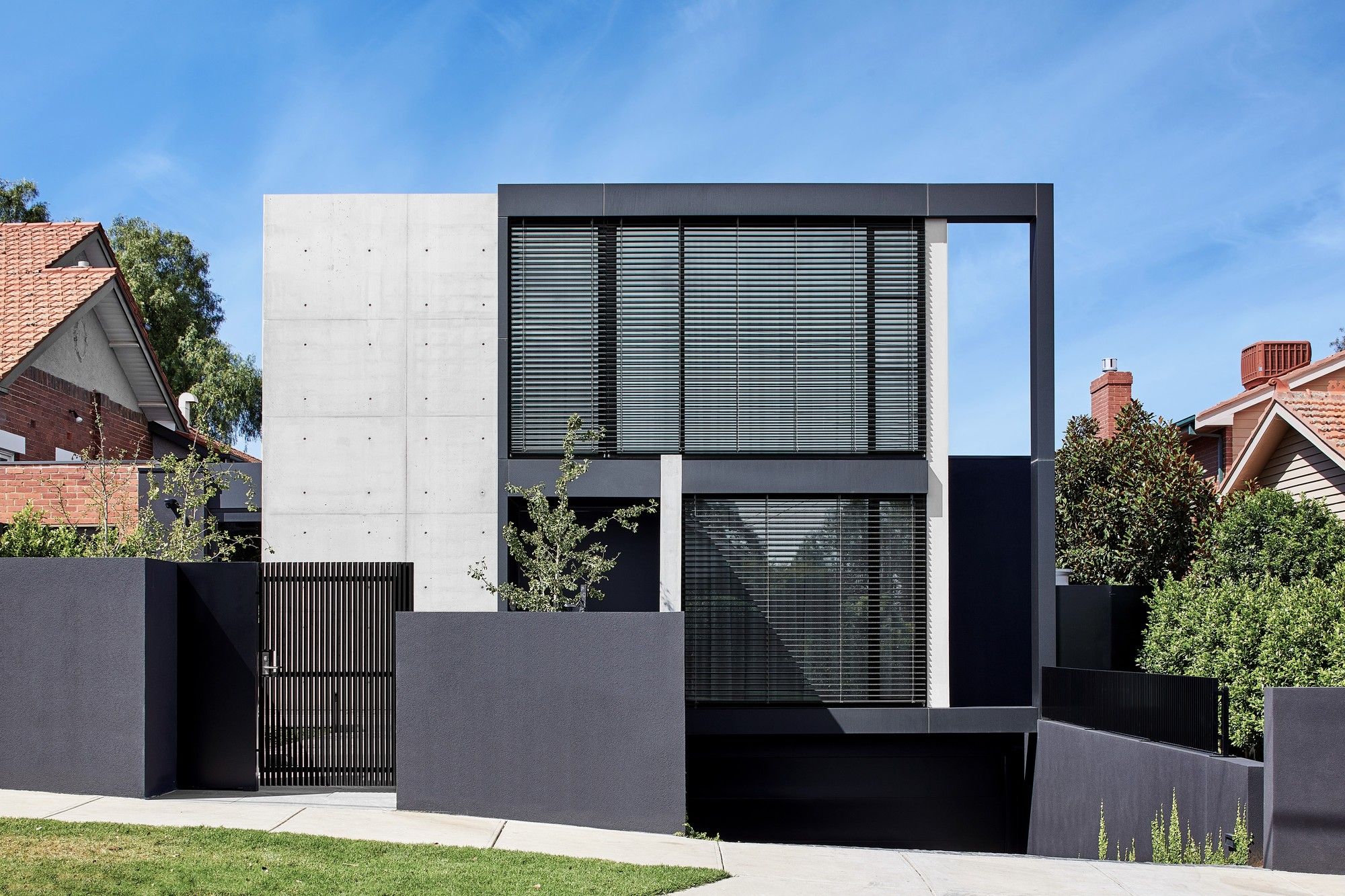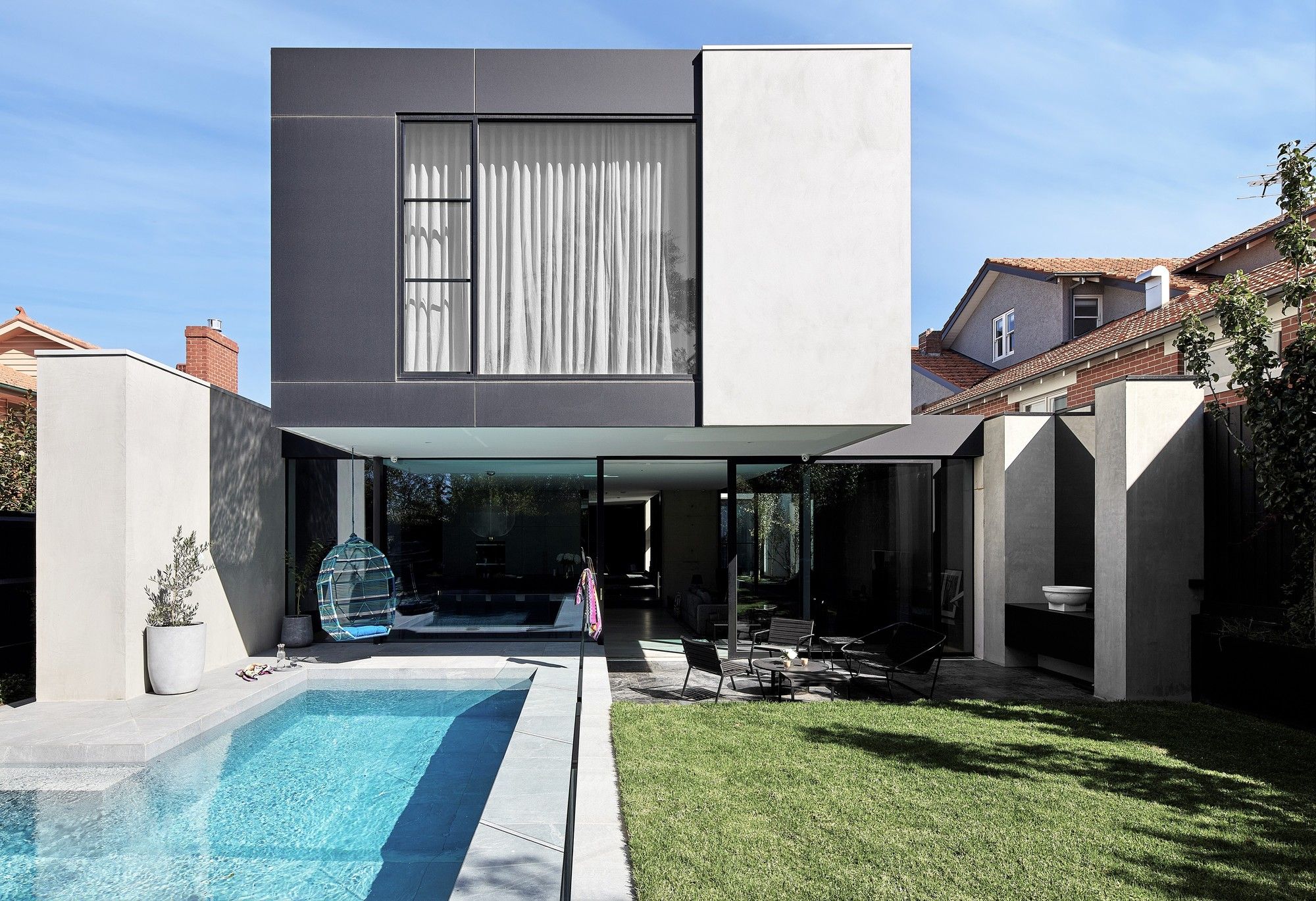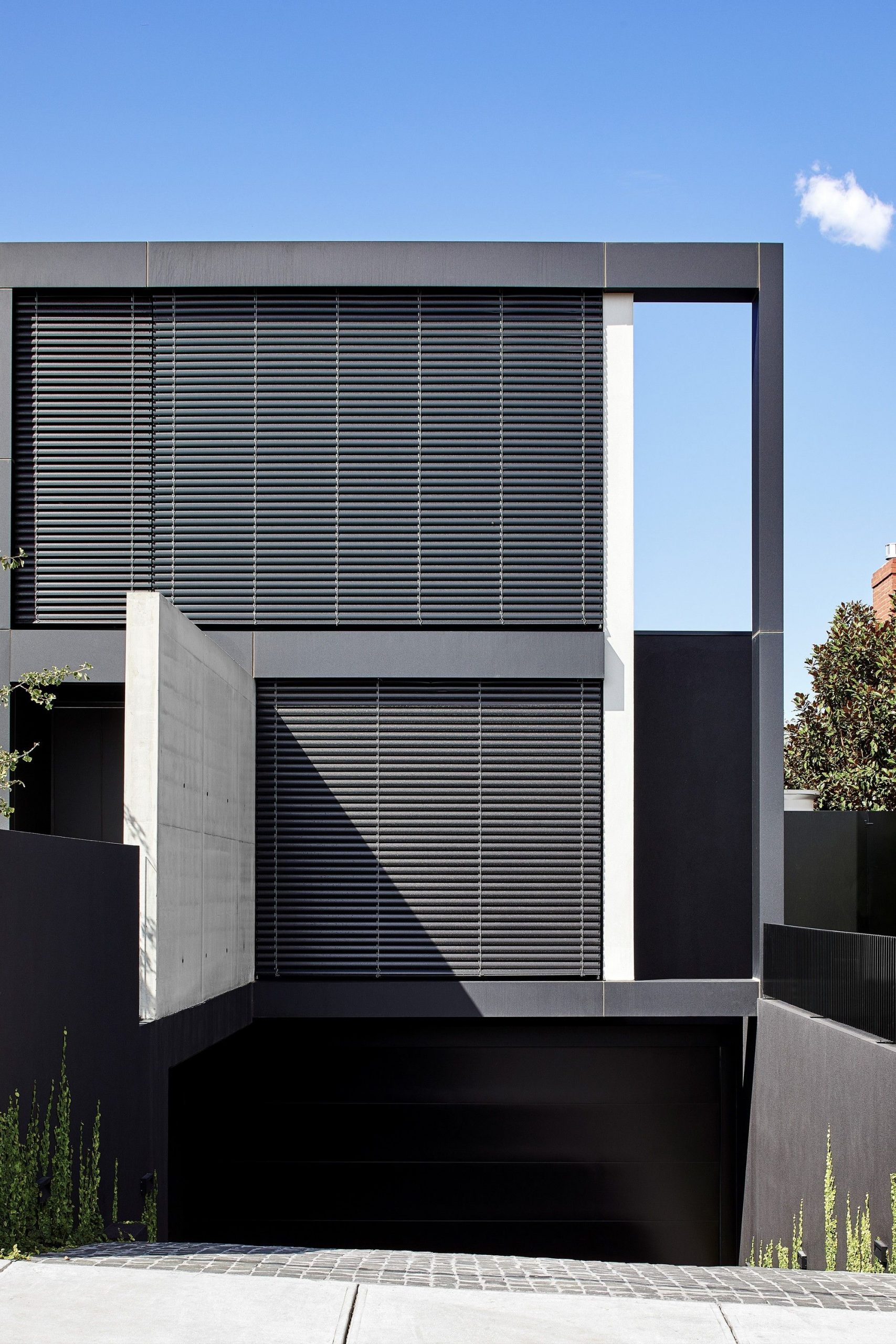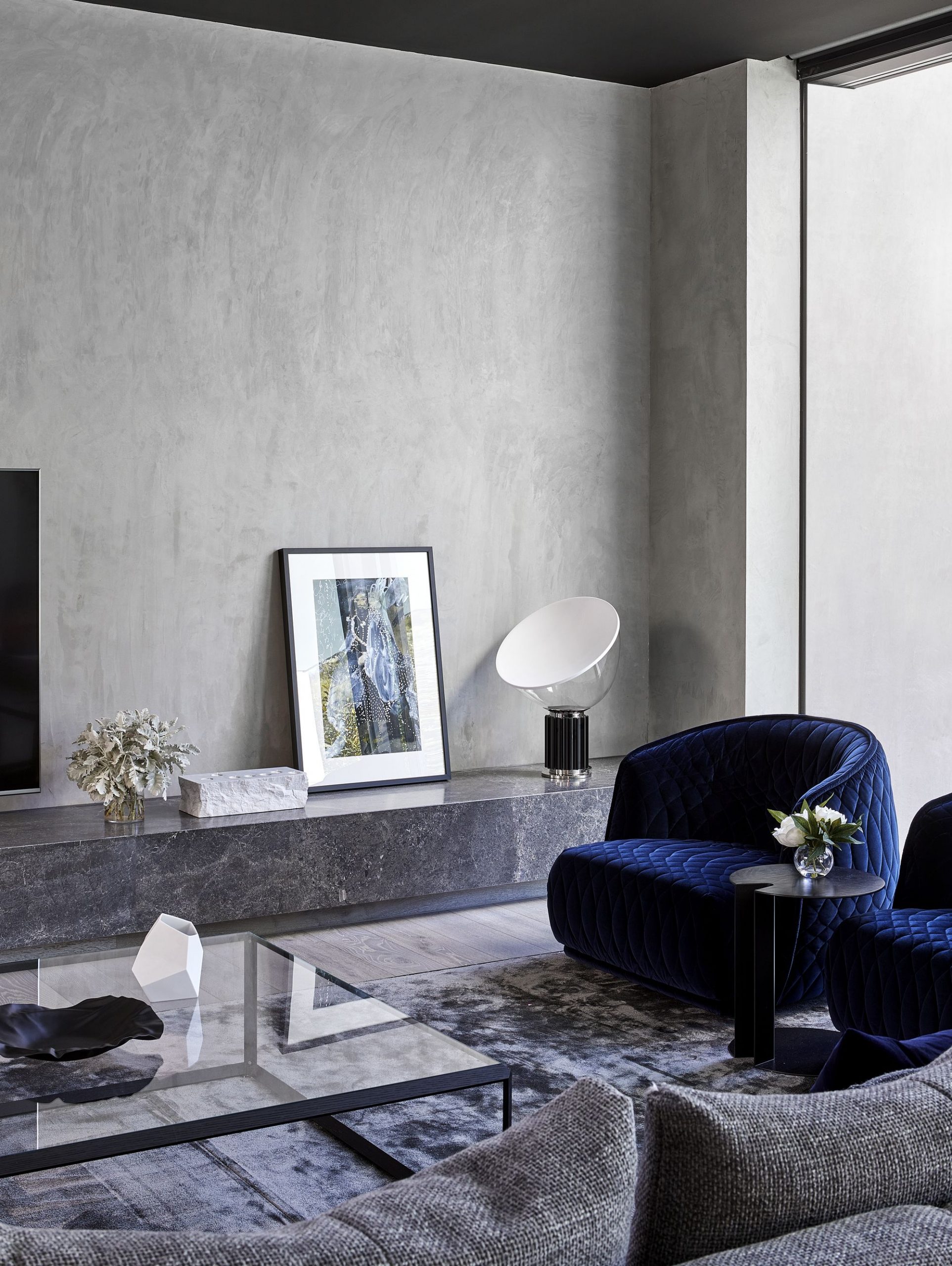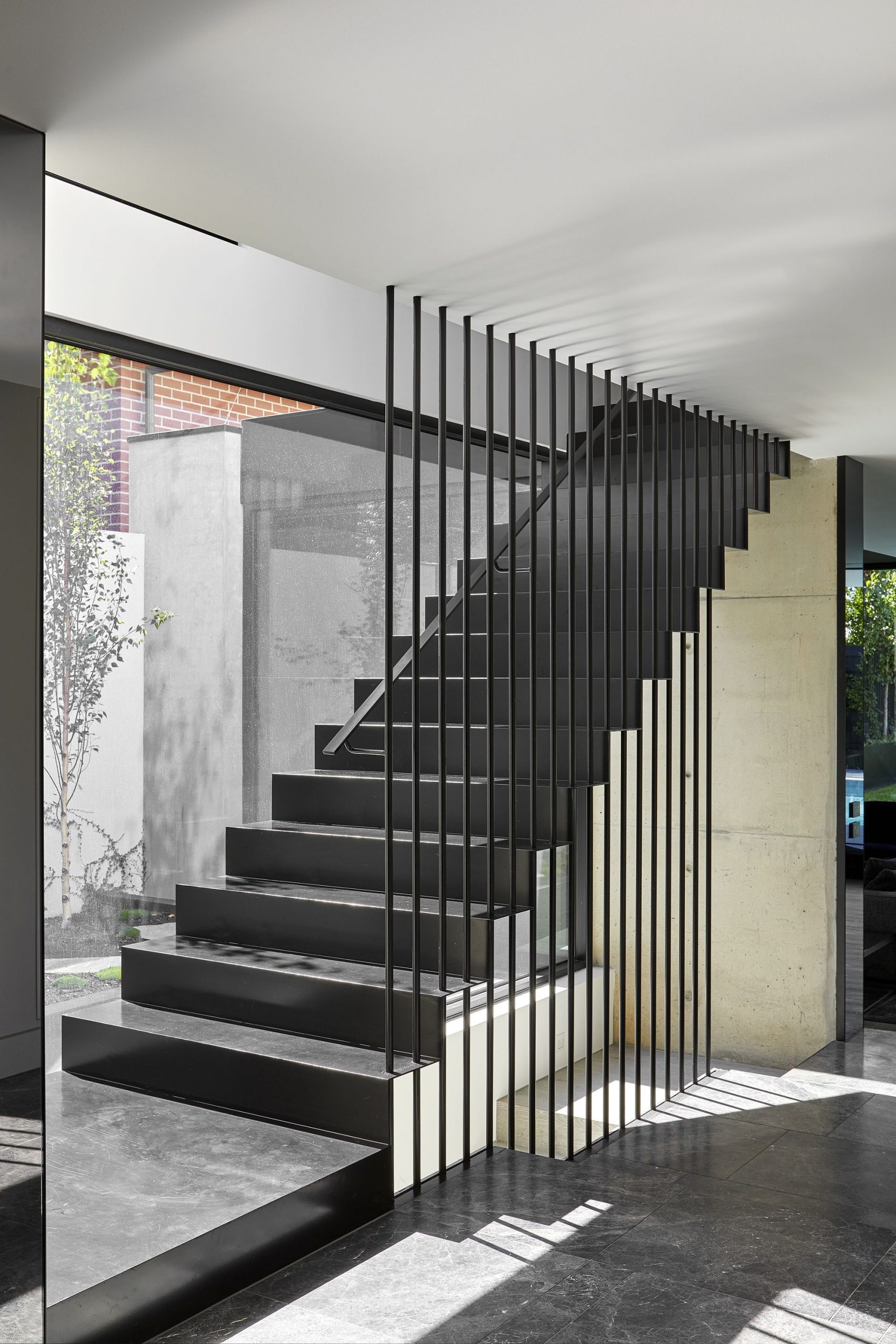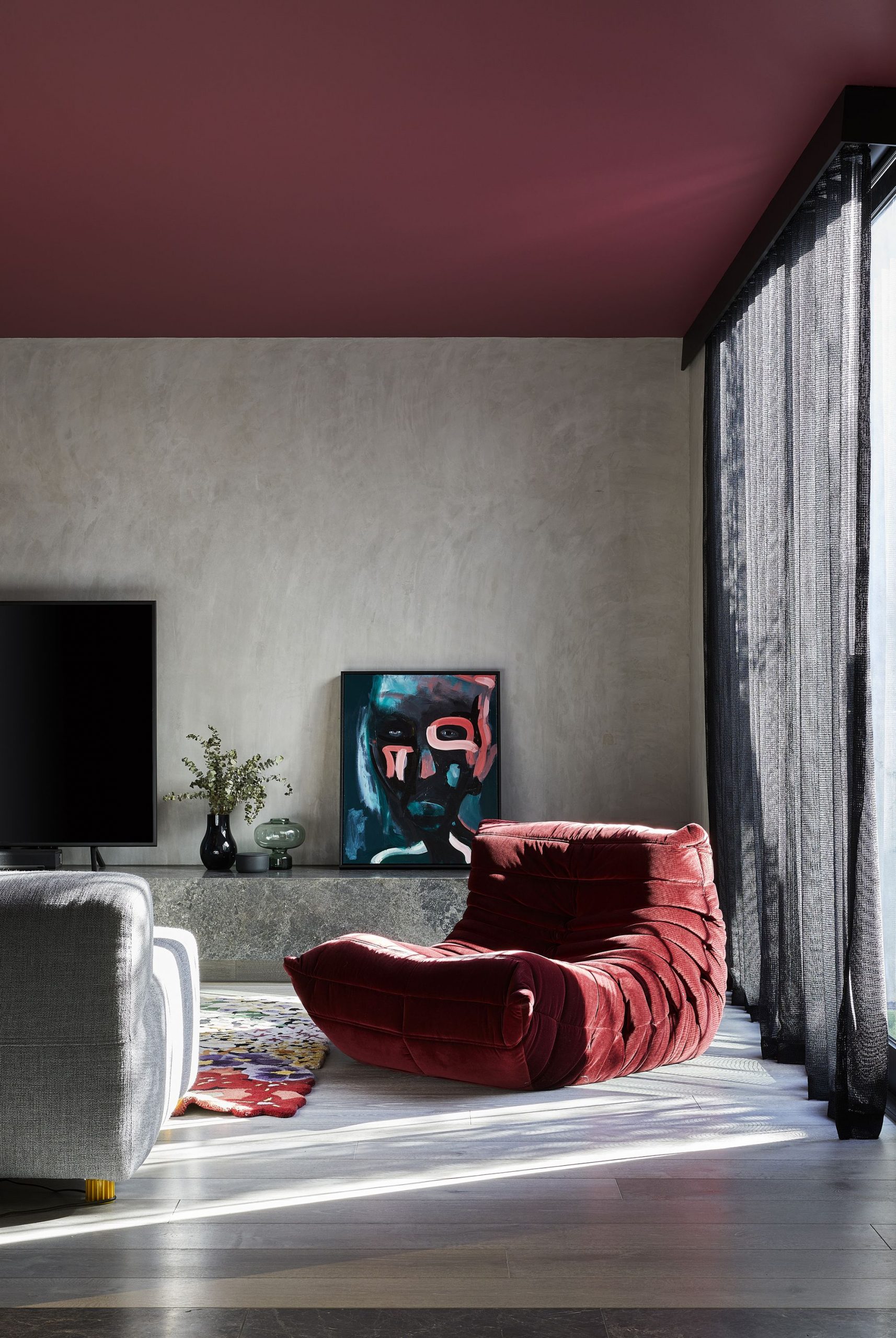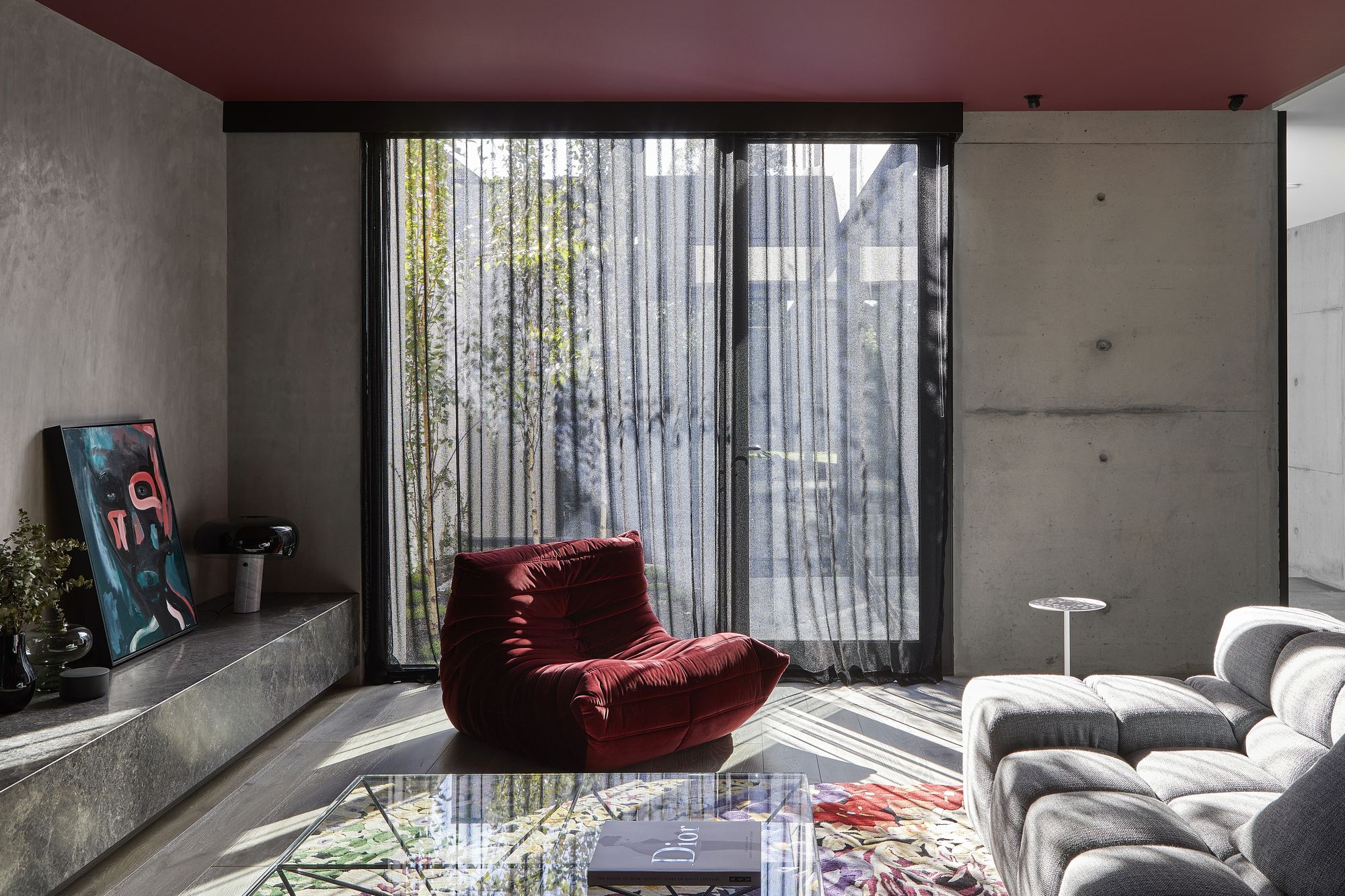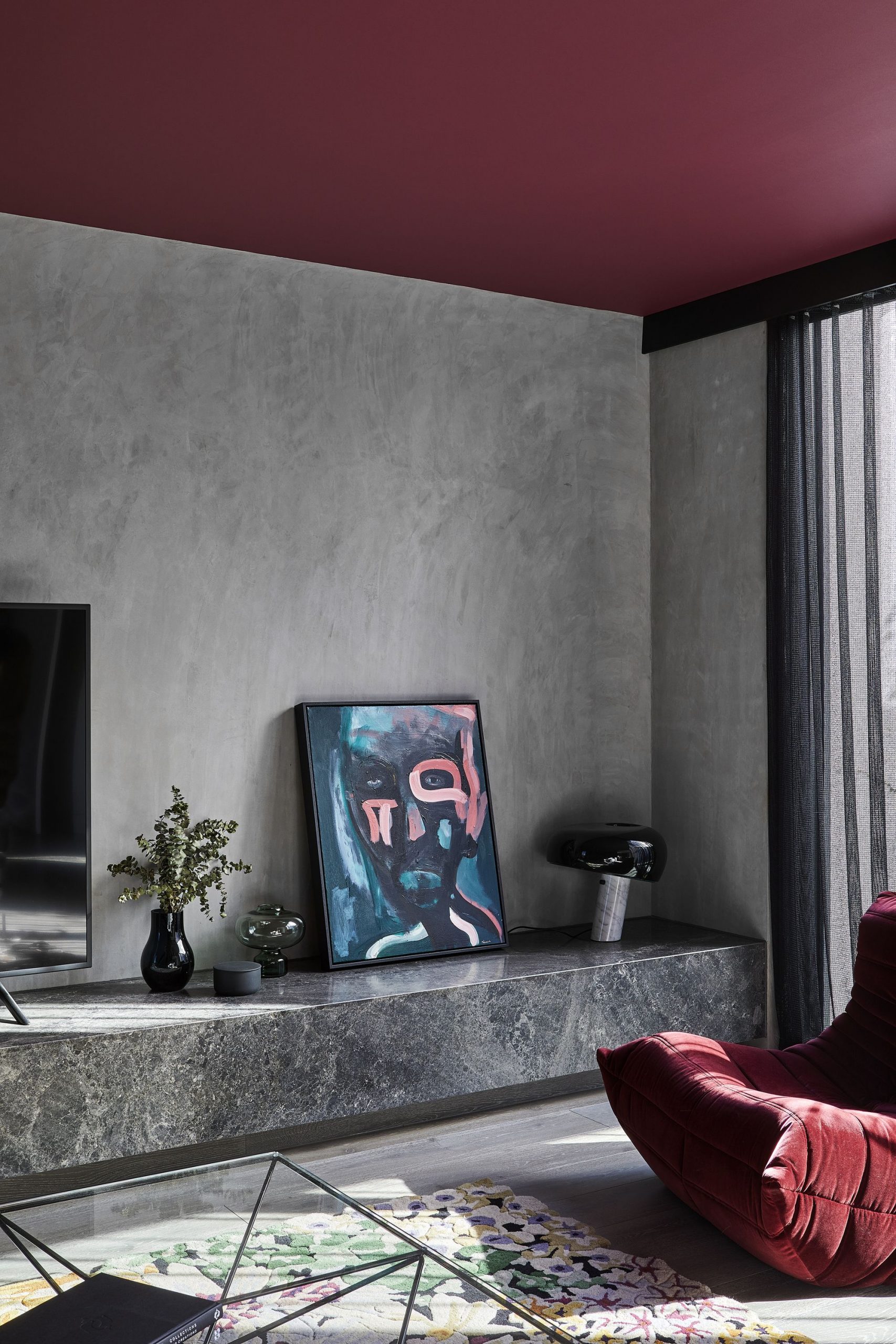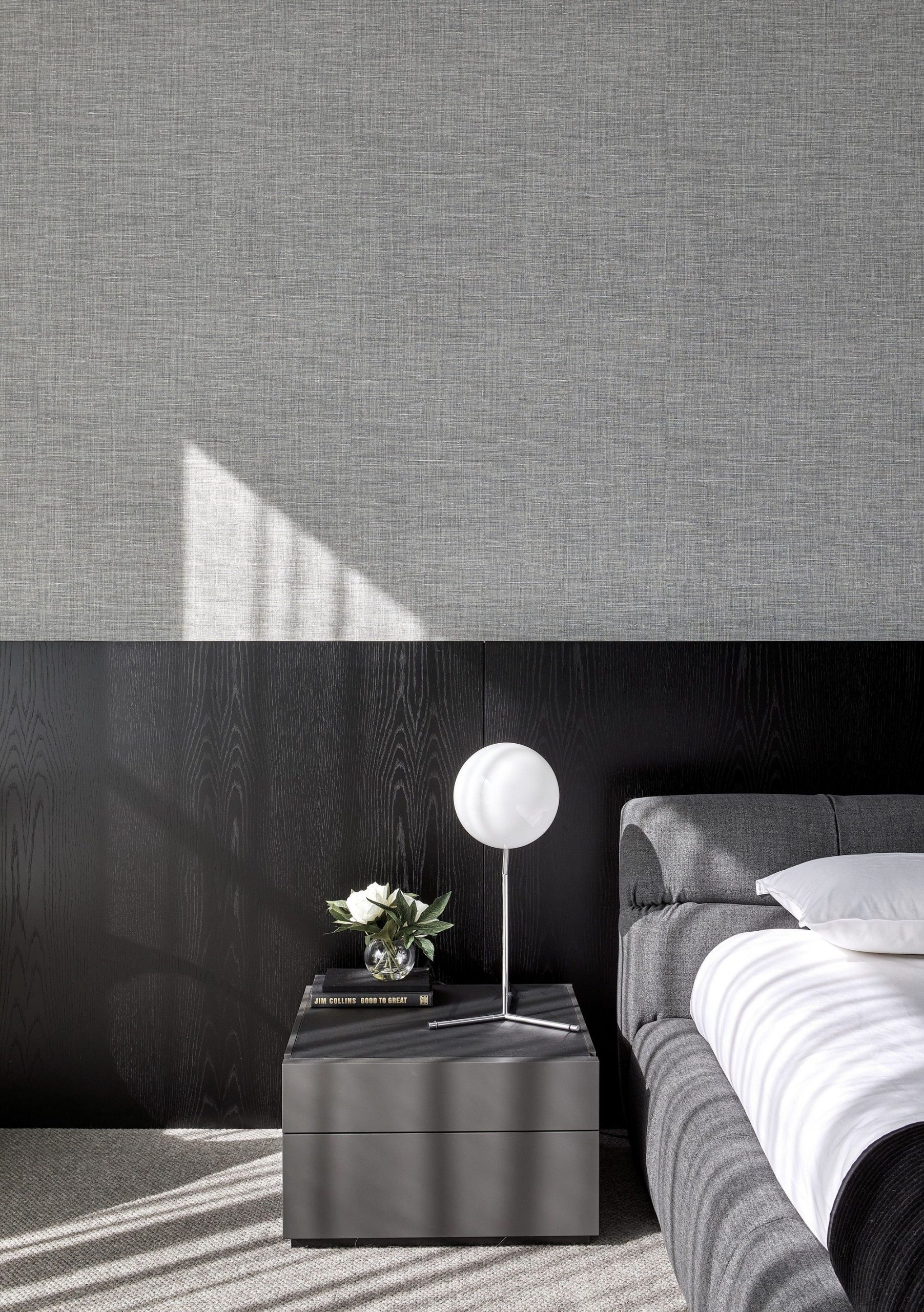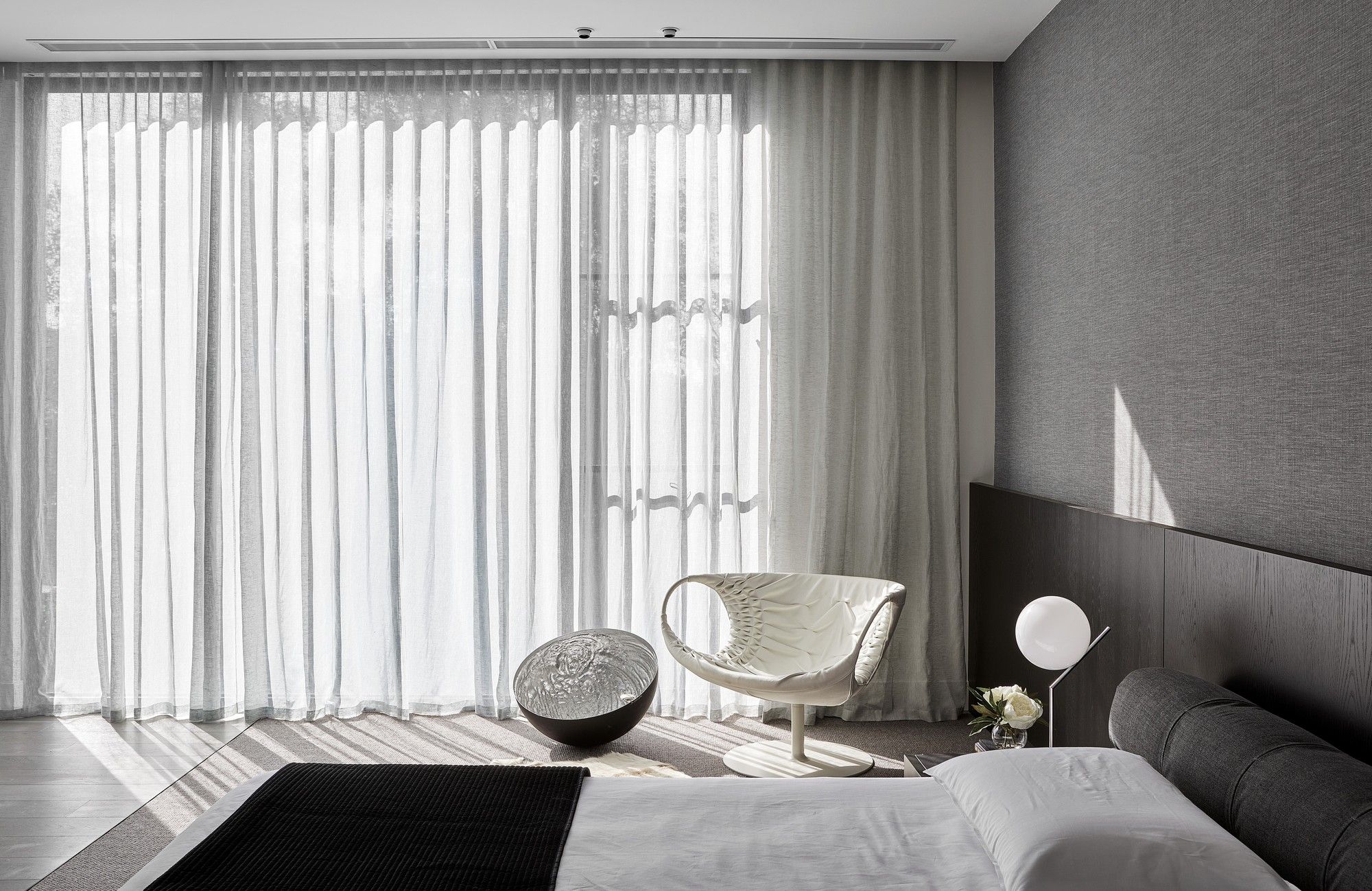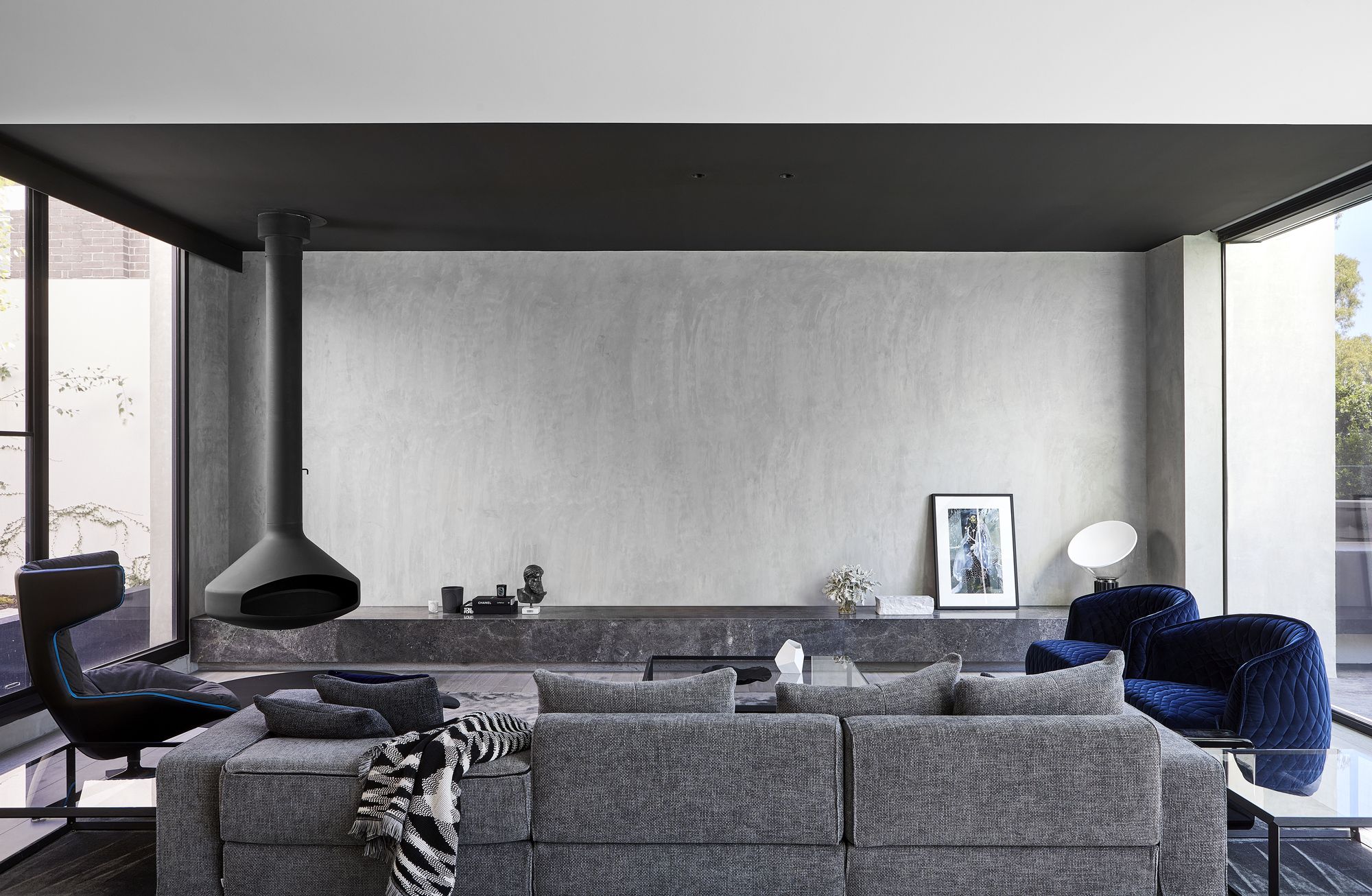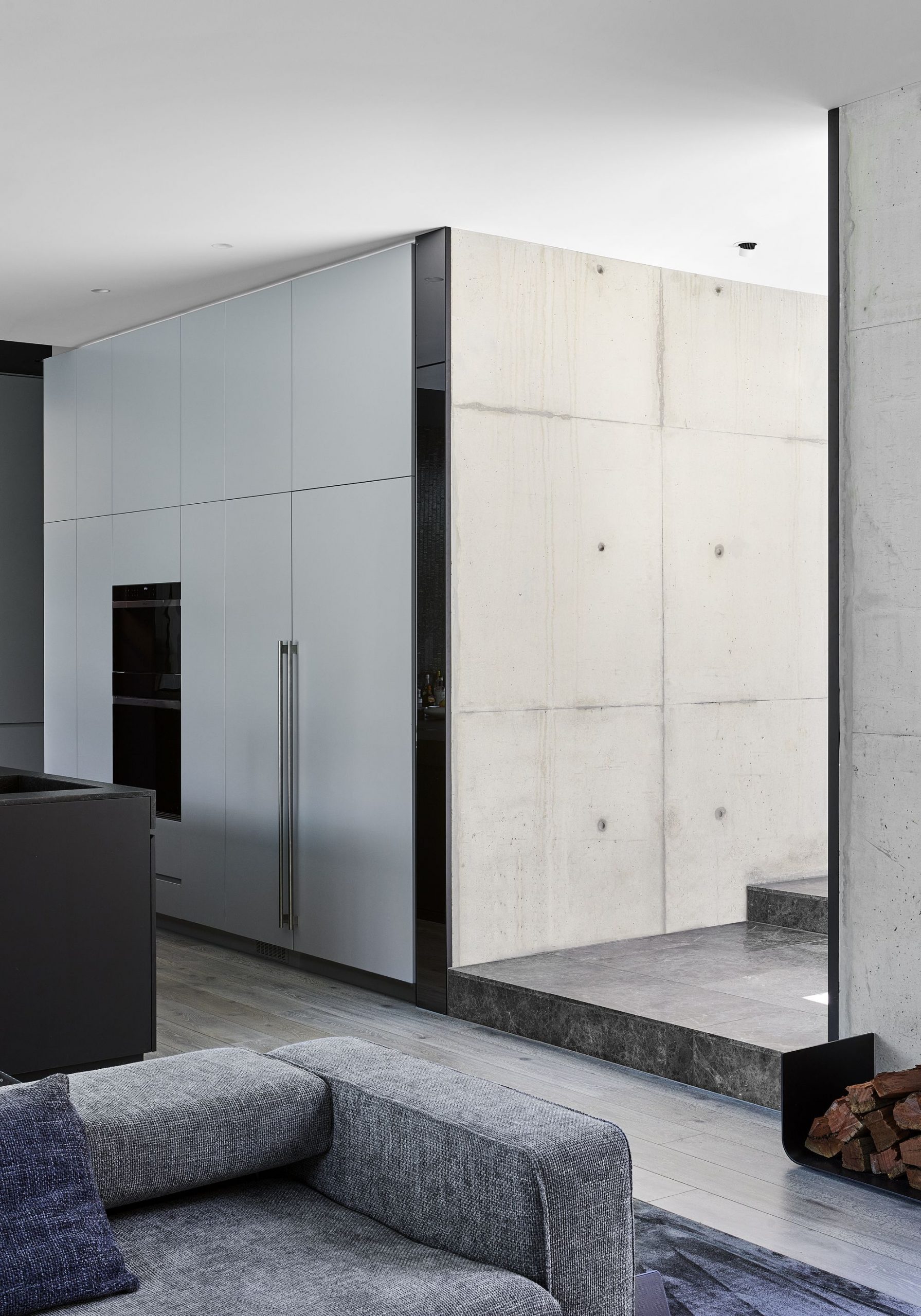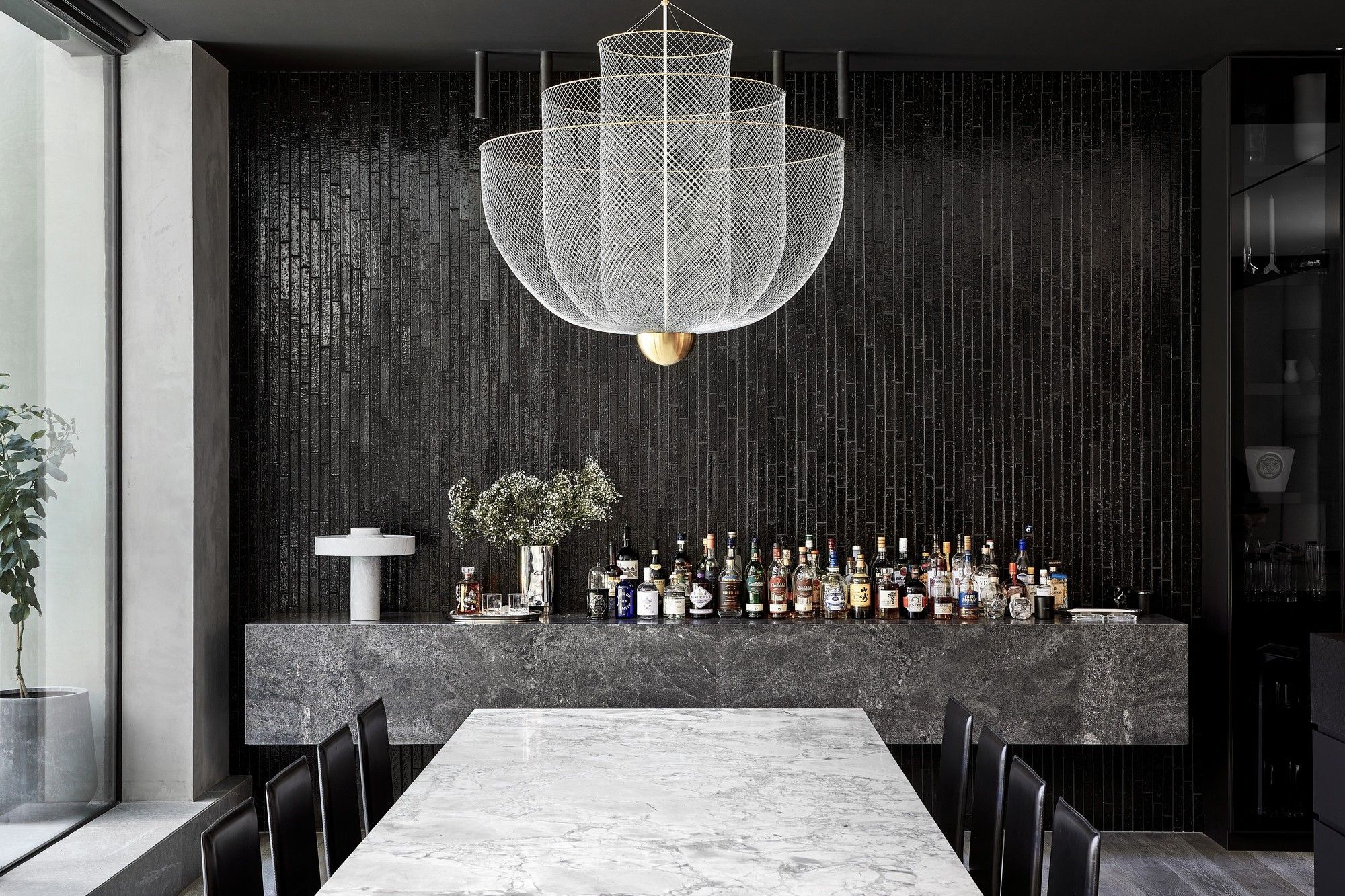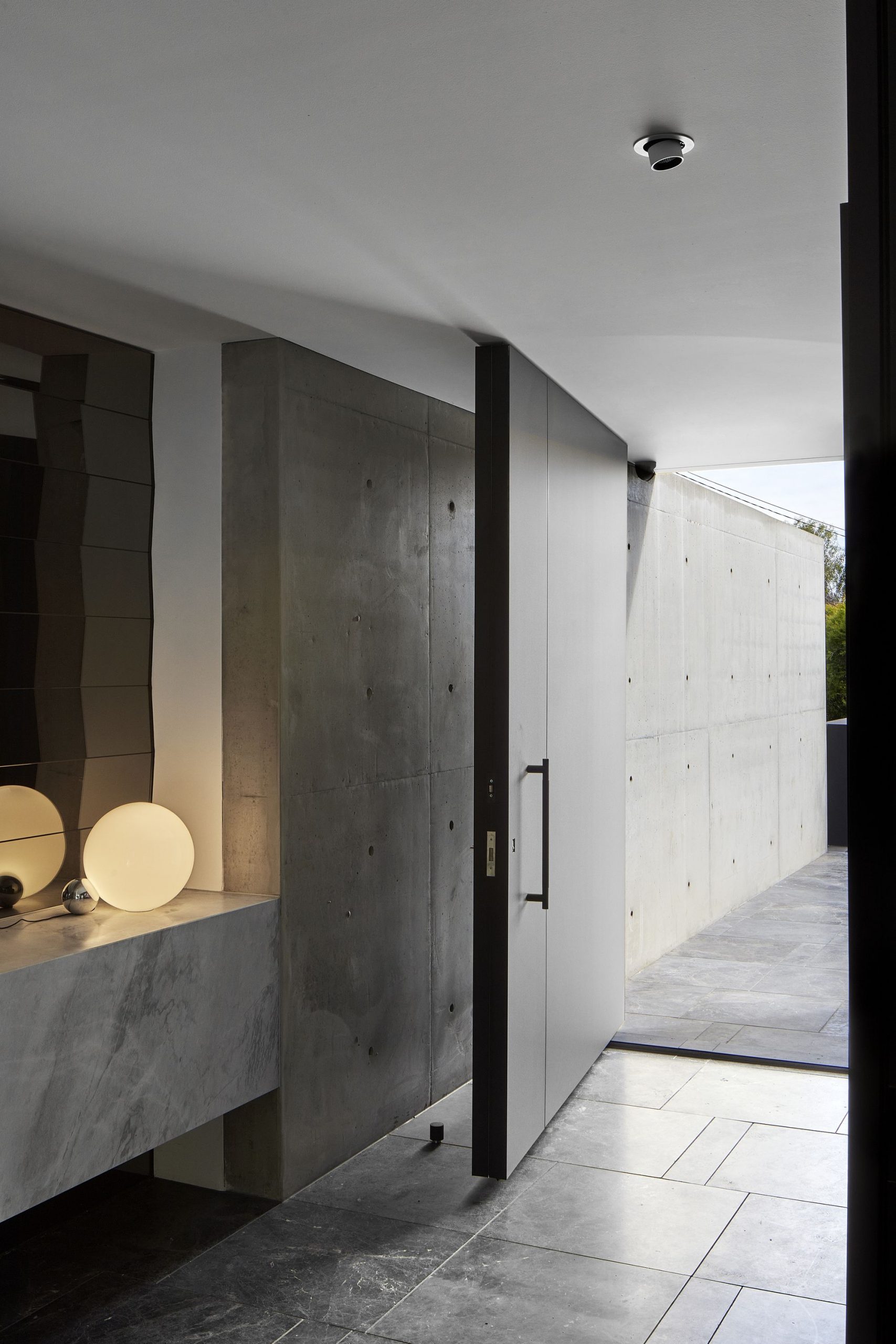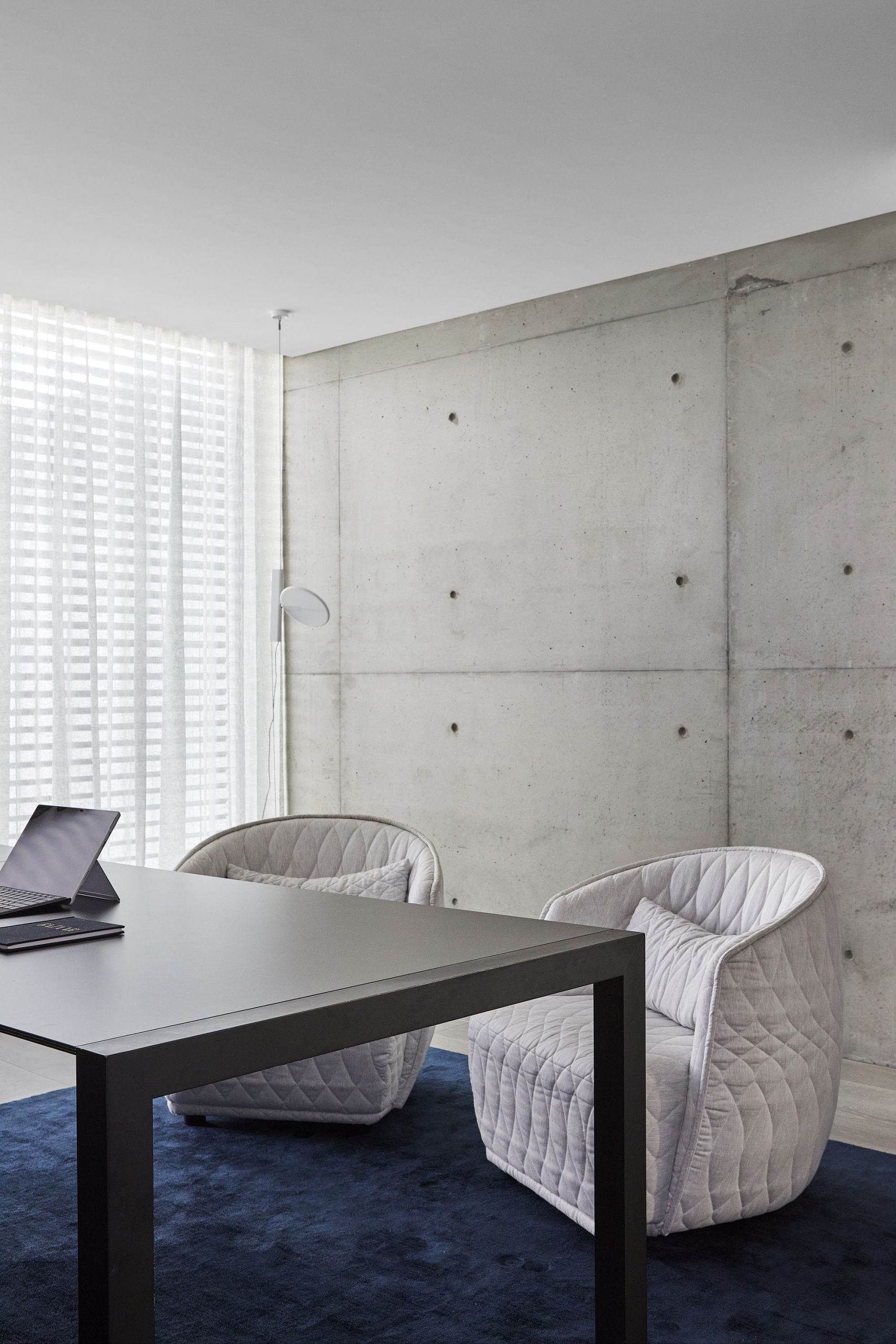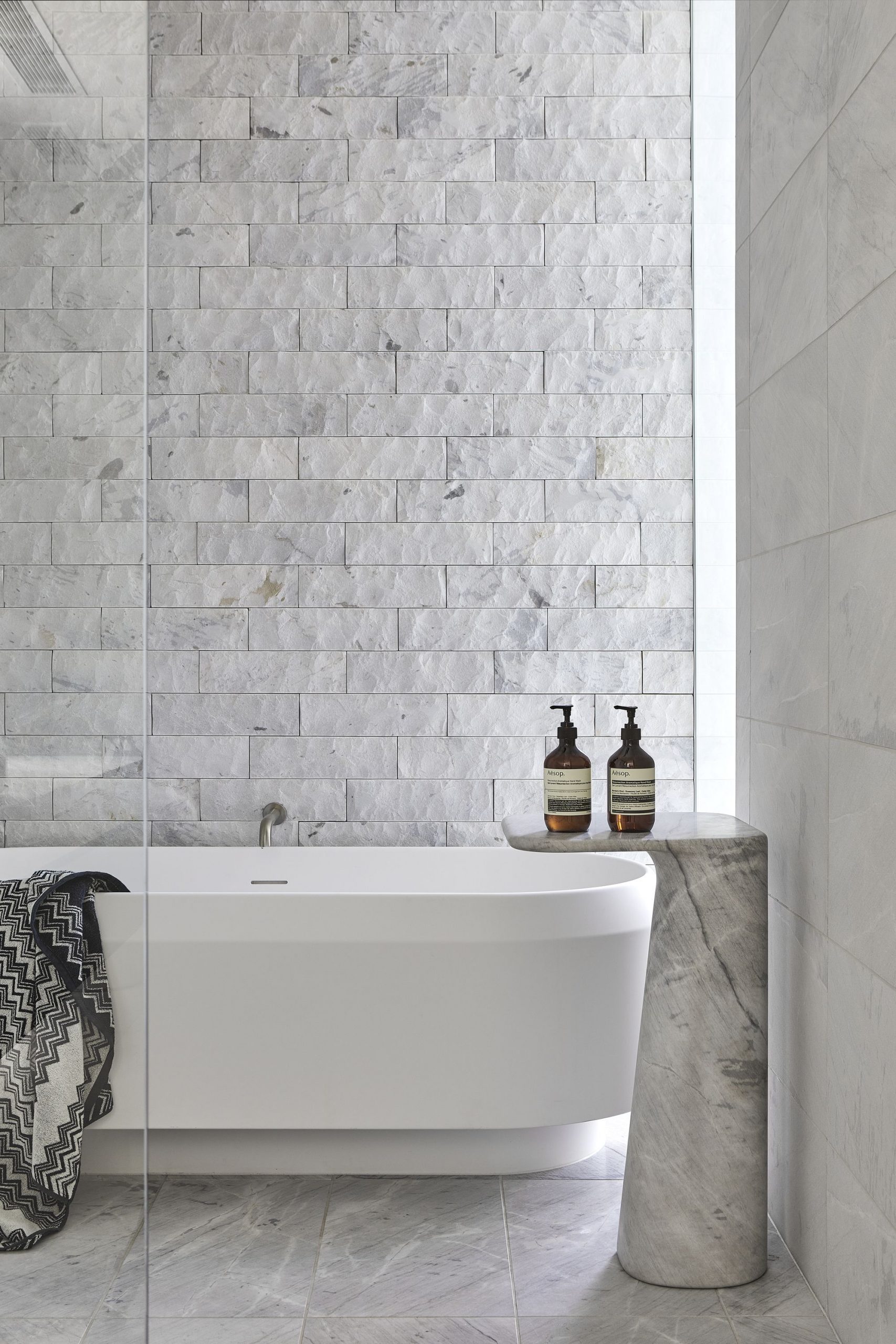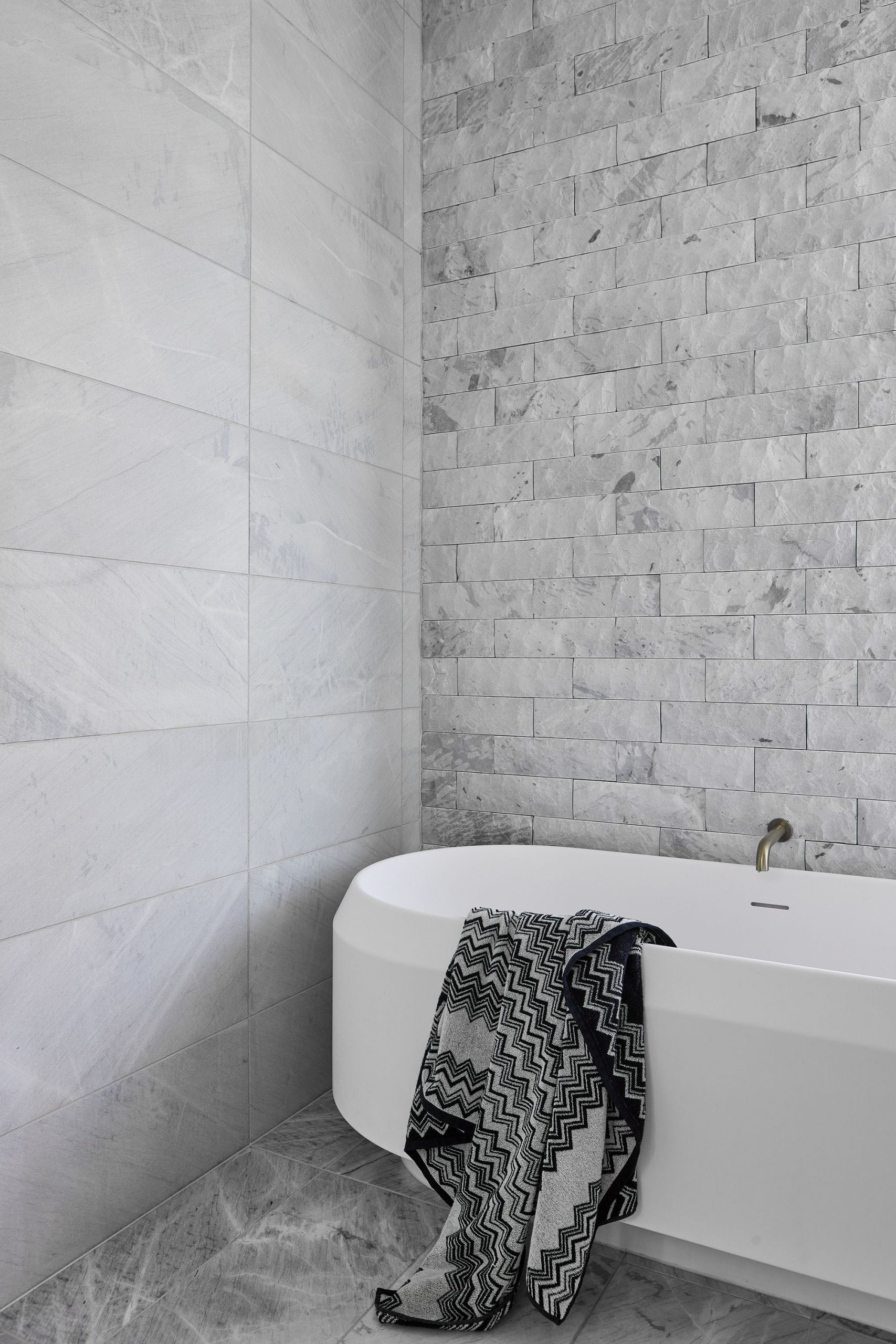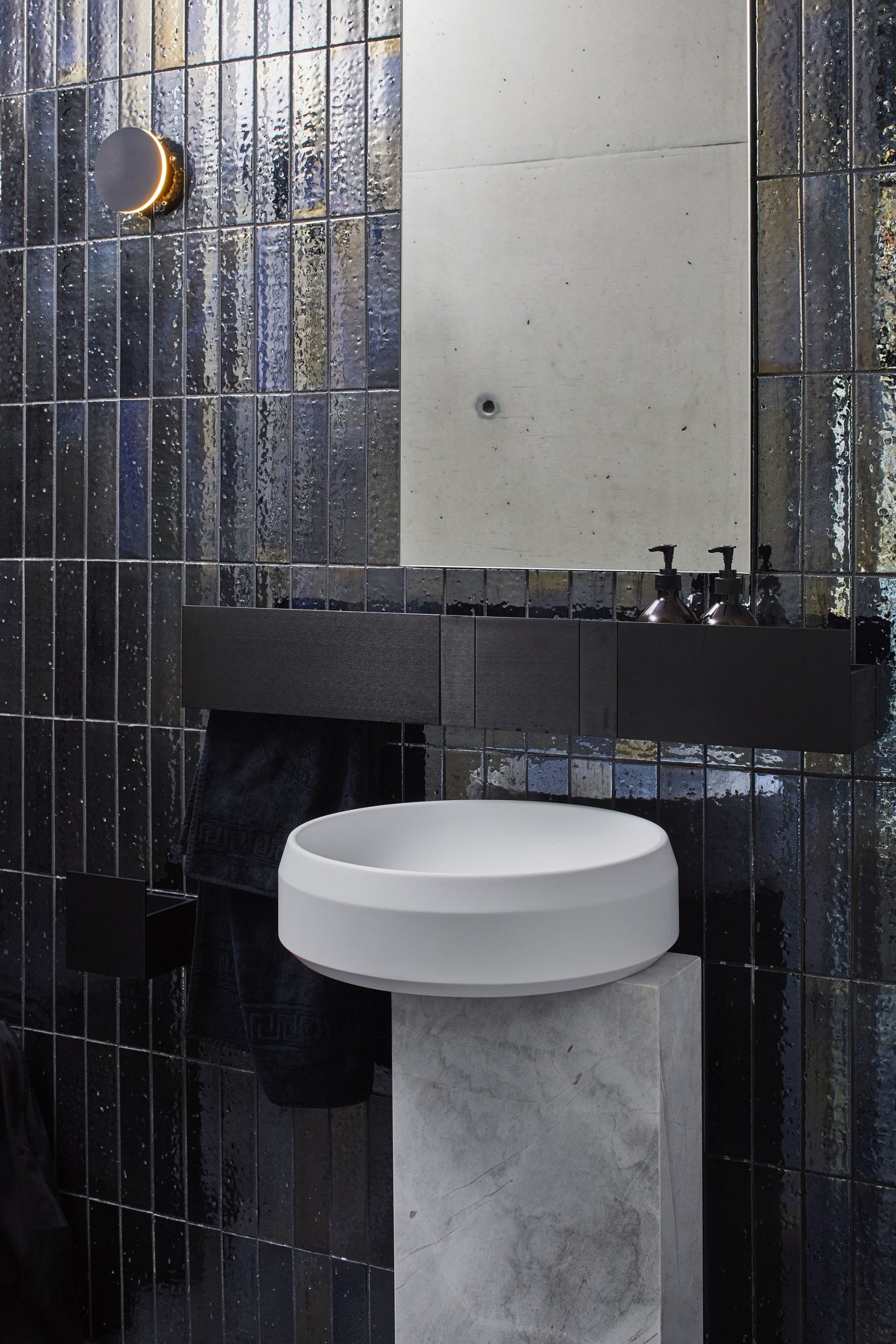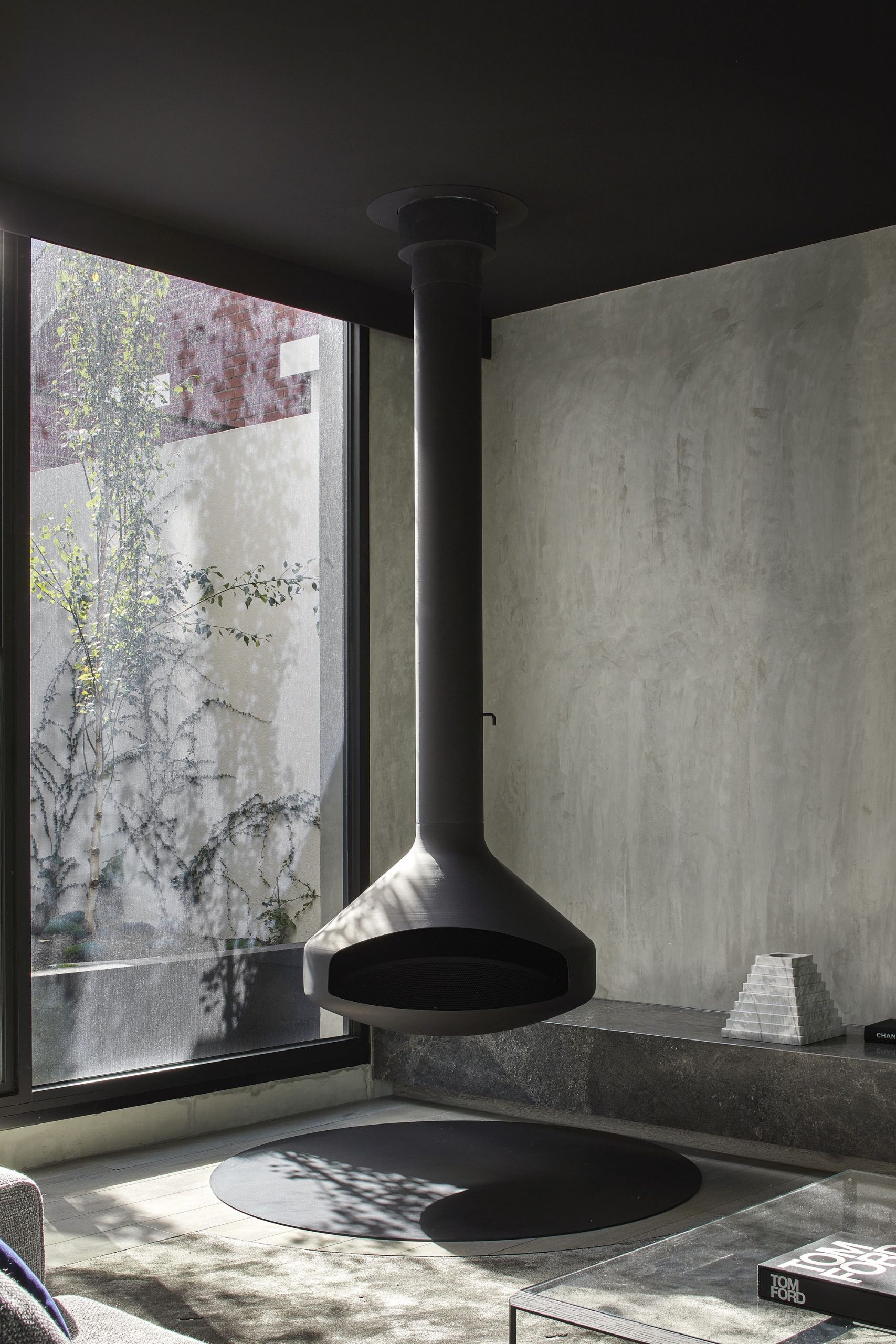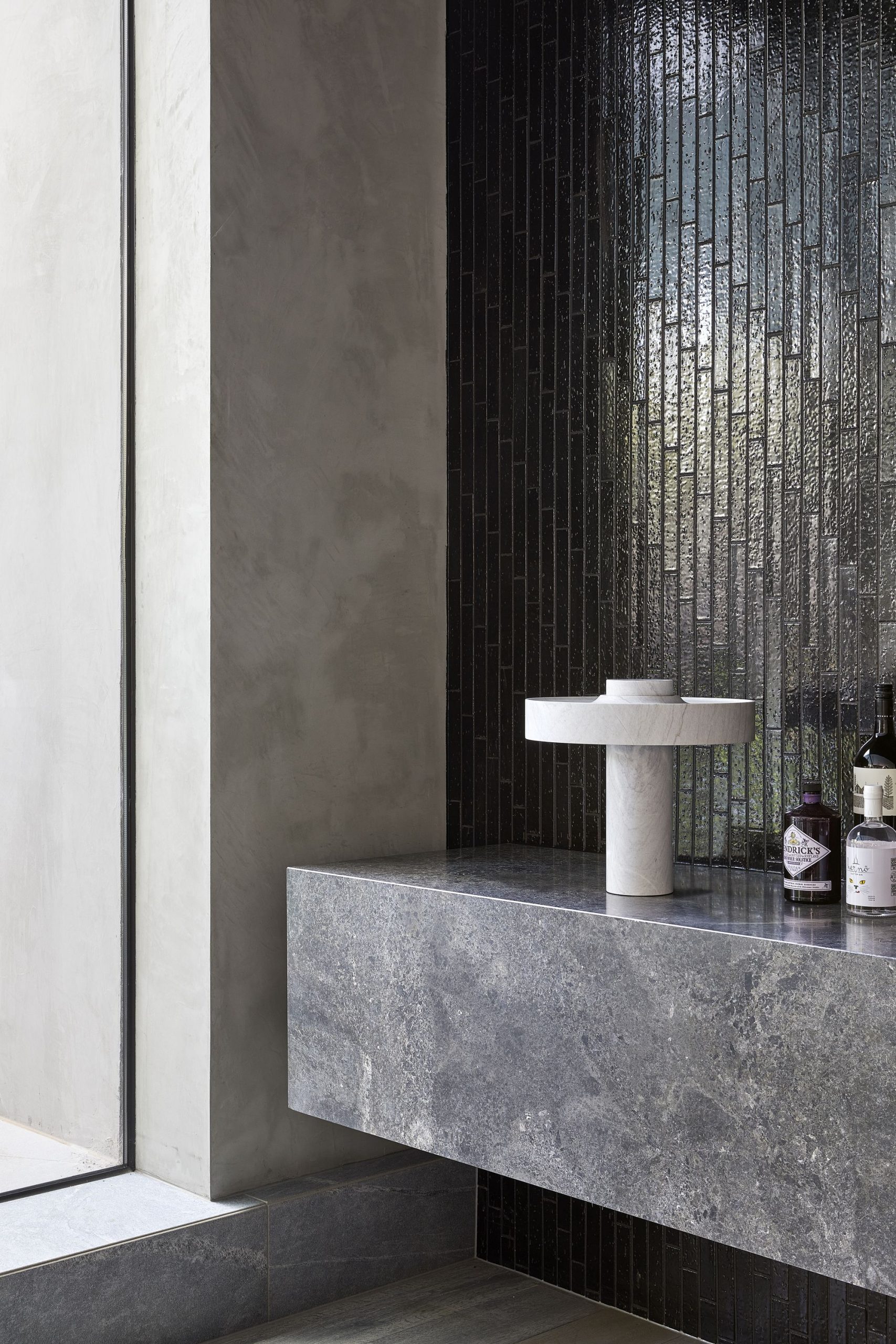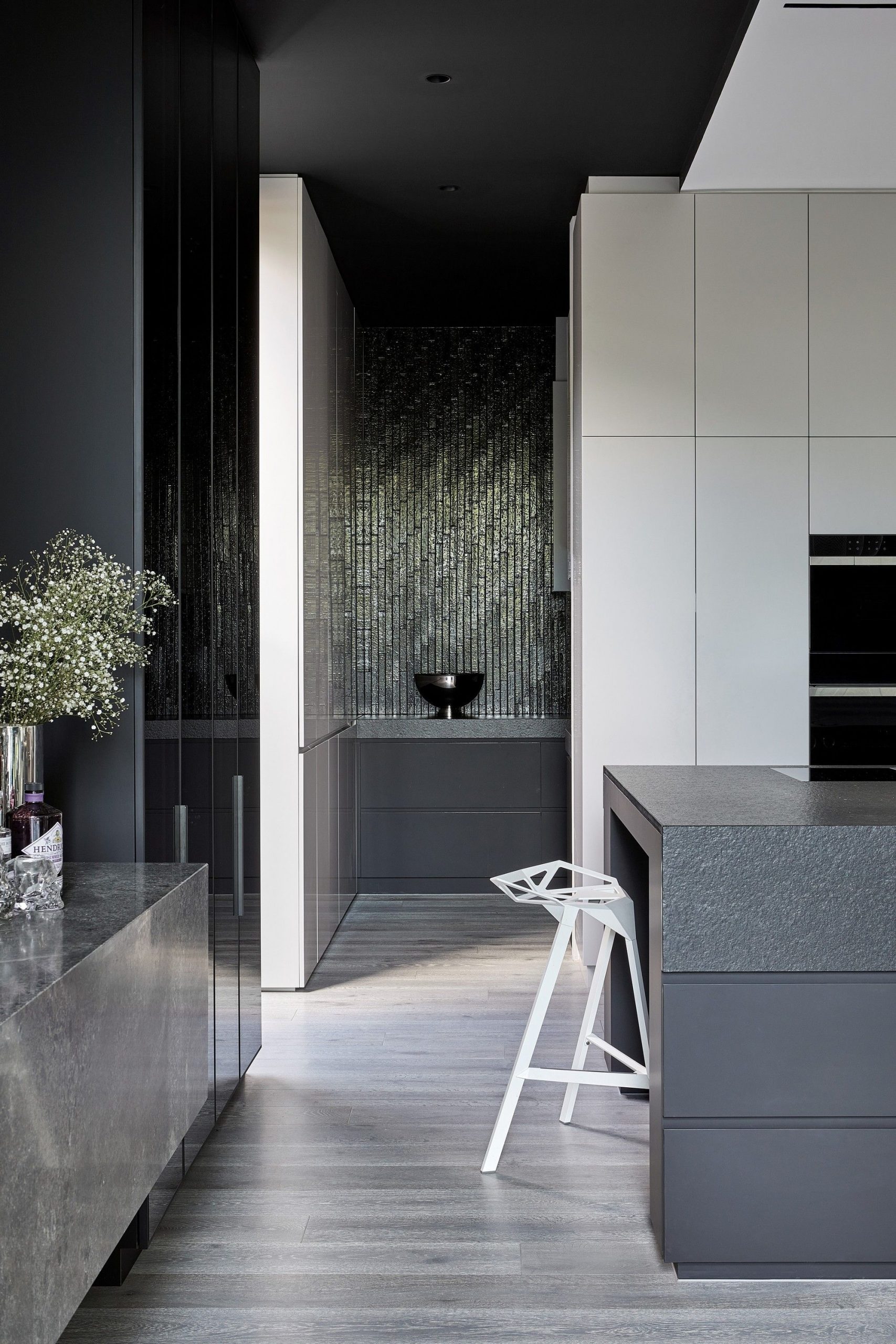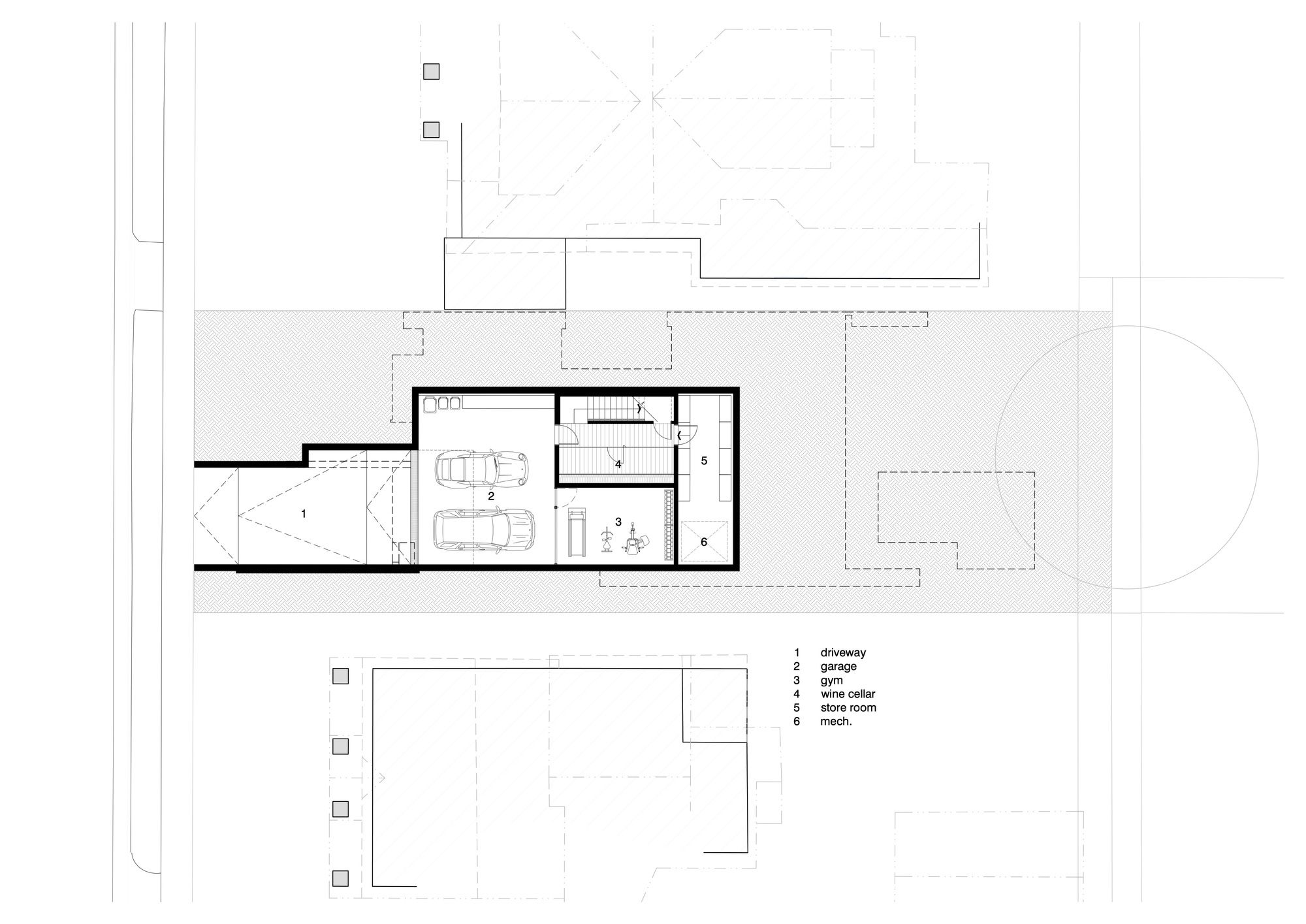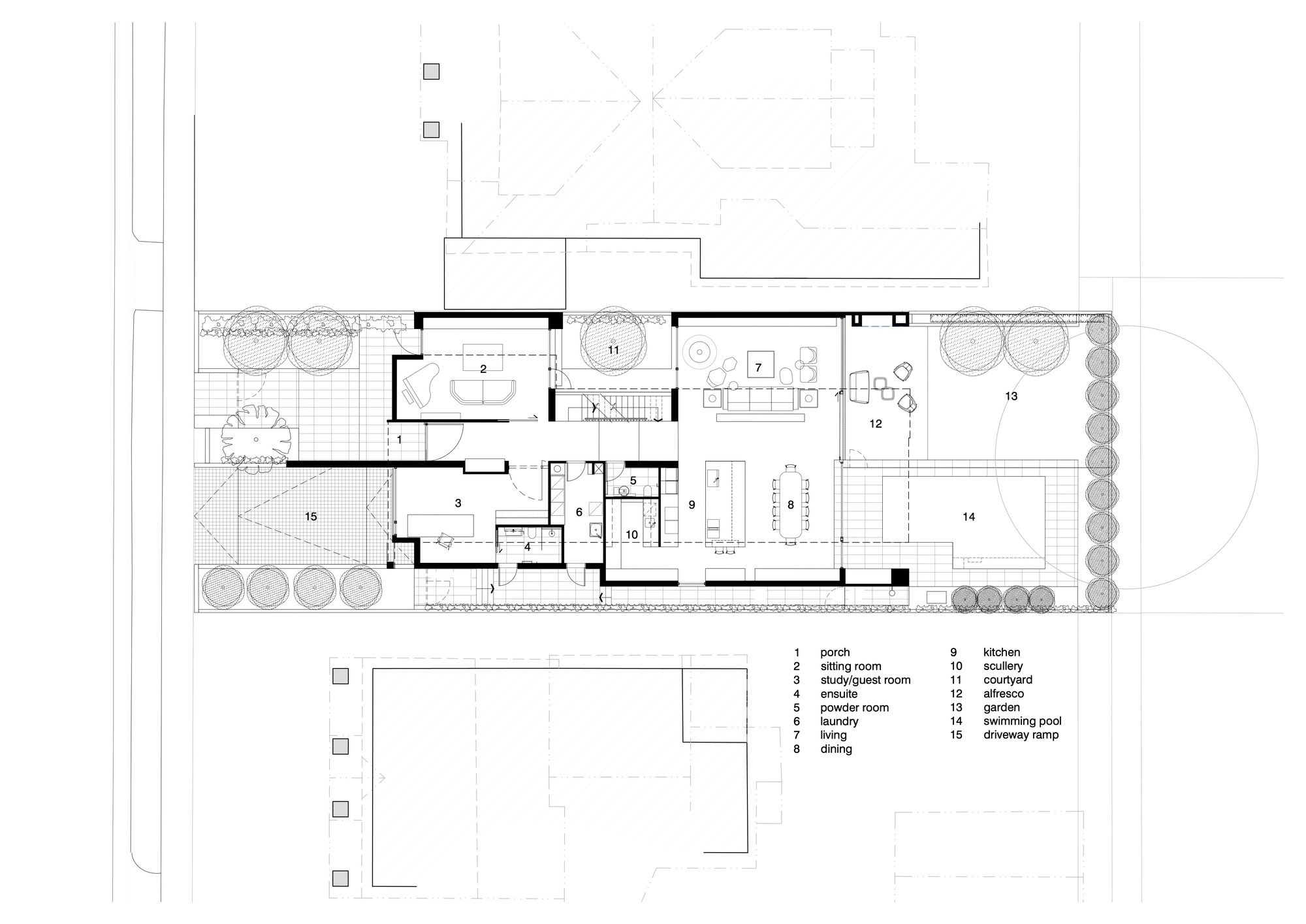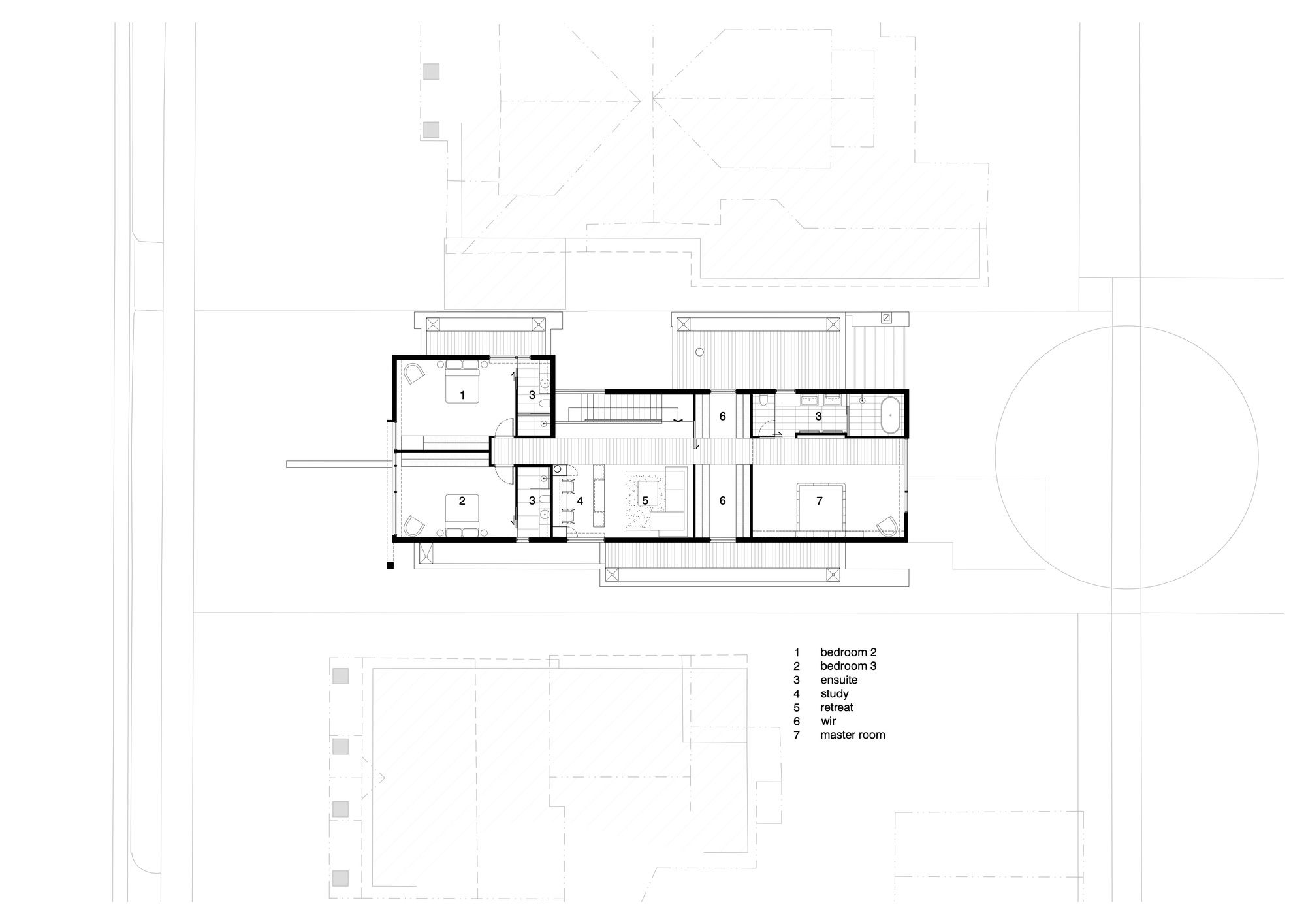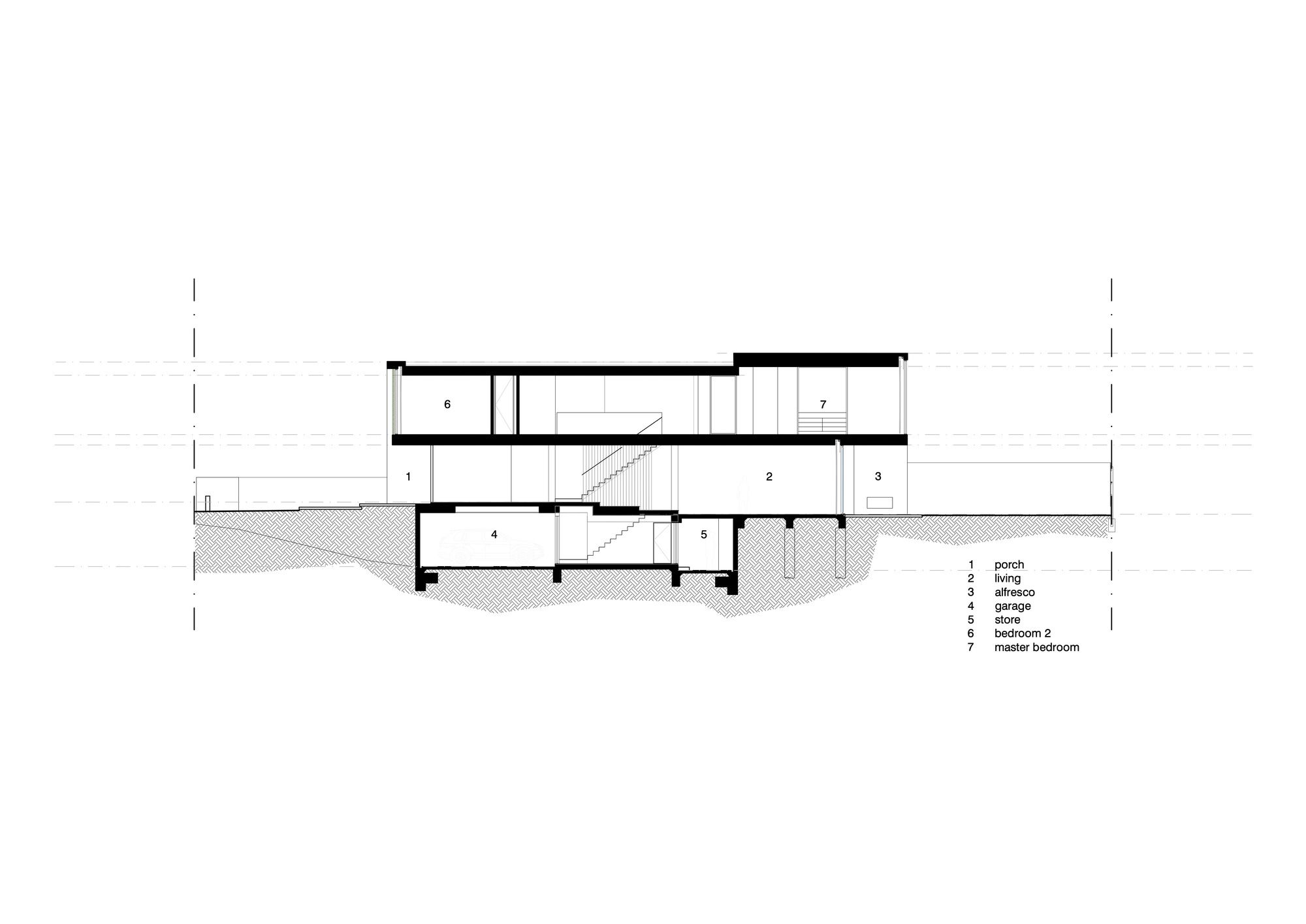Moonee Ponds Residence
The Melbourne home that Architecton Director Nick Lukas designed for himself and his family balances the simplicity of rectilinear forms and raw materials such as concrete, steel, and glass with elegant, detailed interiors. Externally, the architecture reads like a series of intersecting light and dark planes. Despite the abundance of glass, the front façade is deliberately closed, with a deep setback and double-height off-form concrete wall creating a sense of protection from the street. Operable black louver screens create an additional layer across the glazing that allows the level of privacy and sunlight to be controlled.
The design balances the simplicity of rectilinear forms and raw materials such as concrete, steel, and glass with elegant, detailed interiors. With both the exterior screen and the curtains inside covering the glass, it is the entry points that create a sense of volume. The dark front door and basement garage are inset slightly into the building, which draws the eye inward. The parallel lines that define the landscaping also emphasise these points of entry, with walls, paths, and garden beds all leading into the house, creating a sequence that moves from the street, through the garden, to arrive at the entrance.
Off-form concrete was a key element of the design from the beginning. Moving from the front of the building, where the concrete double-height wall is the dominant structure, the rawness of the material is juxtaposed and balanced with a palette of refined materials. Where, externally, the monolithic quality of the material predominates, internally, these aspects create a minimalist yet raw envelope into which more elegant and refined elements are layered. This, in turn, brings out the nuances of the architecture.
With an approach that focused on enhancing and expressing the essential qualities of different materials, natural stone and delicate Japanese tiles play an important role in the interiors. Balancing the weighty presence of the concrete walls, large expanses of glass visually connect the interior to the garden outside.
As the culmination of both the experience of building several previous homes and Nick’s practice as an architect, the house represents what is most important to the family. Driven by this design intent, architecture, interiors, and landscape all come together to create a place where they can settle and put down roots.
Project Info:
Architects: Architecton
Location: Melbourne, Australia
Area: 520 m²
Project Year: 2020
Photographs: Dave Kulesza
Manufacturers: Enscape, Focus, FritsJurgens, Agape, B&B Italia, BORA, Flos, G-LUX, Kristalia , Ligne Roset, Molteni & C, Moroso, iGuzzini, Artedomus, Astra Walker, Lupak Metal, Sub Zero/Wolf, Trimble Navigation, made by storey
Photography by © Dave Kulesza
Photography by © Dave Kulesza
Photography by © Dave Kulesza
Photography by © Dave Kulesza
Photography by © Dave Kulesza
Photography by © Dave Kulesza
Photography by © Dave Kulesza
Photography by © Dave Kulesza
Photography by © Dave Kulesza
Photography by © Dave Kulesza
Photography by © Dave Kulesza
Photography by © Dave Kulesza
Photography by © Dave Kulesza
Photography by © Dave Kulesza
Photography by © Dave Kulesza
Photography by © Dave Kulesza
Photography by © Dave Kulesza
Photography by © Dave Kulesza
Photography by © Dave Kulesza
Photography by © Dave Kulesza
Photography by © Dave Kulesza
Photography by © Dave Kulesza
Basement plan
Ground floor plan
1st floor plan
Section


